For Good Measure
Types of Hygrometers in the Market
There are multiple products available to measure humidity with different names, such as hygrometers, humidistats, humidity sensors and dew point sensors. This article provides an
overview of these devices and their operation.
Wet bulb type:
A wet bulb hygrometer contains two thermometers, with the bulb of one thermometer kept wet so that evaporation lowers its temperature (wb) and the second thermometer is dry (db).
The relative humidity is determined by locating the intersection of the wet and dry-bulb temperatures on a psychrometric chart.
|
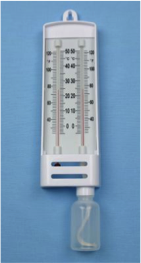
|
Metal-paper coil type:
The metal-paper coil hygrometer is very useful for giving a dial indication of humidity changes. It appears most often in very inexpensive devices, and its accuracy is limited, with variations
of 10% or more. In these devices, water vapor is absorbed by a salt-impregnated paper strip attached to a metal coil, causing the coil to change shape, which is reflected on the dial
|
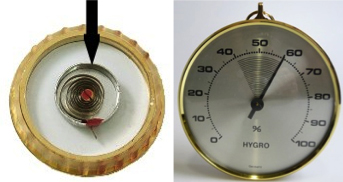
|
Hair tension type:
These devices use a human or animal hair under tension. Hair tends to absorb moisture (hygroscopic), the length changes with humidity and that length change is magnified by a mechanism
and indicated on a dial.
|
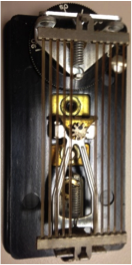
|
Chilled mirror dew point type:
Dew point is the temperature at which moist air at constant pressure reaches water vapor saturation. At this saturation temperature, further cooling results in condensation of water.
This device uses a chilled mirror and photo-detector to identify condensation on the mirror's surface. The temperature of the mirror is controlled by electronic feedback to maintain a dynamic
equilibrium between evaporation and condensation, thus closely measuring the dew point temperature.
|
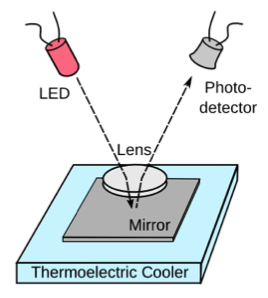
|
Capacitive humidity sensor:
Capacitive humidity sensors sense water by measuring the change in capacitance between two plates. The sensor is a made from two metal electrodes with a porous dielectric substance between
them. Water vapor is able to penetrate this layer, changing the total capacitance. The incremental change in the dielectric is nearly directly proportional to the relative humidity.
|
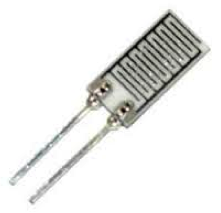
|
Resistive humidity sensor
Resistive type humidity sensors pick up changes in the resistance value of the sensor element in response to the change in the humidity. Resistive humidity sensors use membranes that change
conductivity in relation to water absorption. Typical materials are salts and conductive polymers. As humidity changes, so does the resistance of the electrodes.
|
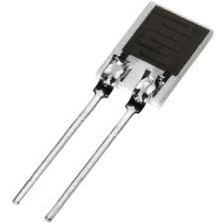
|
Neptronic’s humidity sensors (wall mount model SHR10 and duct mount model SHC80) and wall mount controllers (model HRO20 and HROB20 with BACnet) have the most advanced humidity
and temperature sensing solution for virtually any type of application. Each device has a capacitive polymer sensor, which is individually calibrated and tested, to perform over a wide humidity
range.